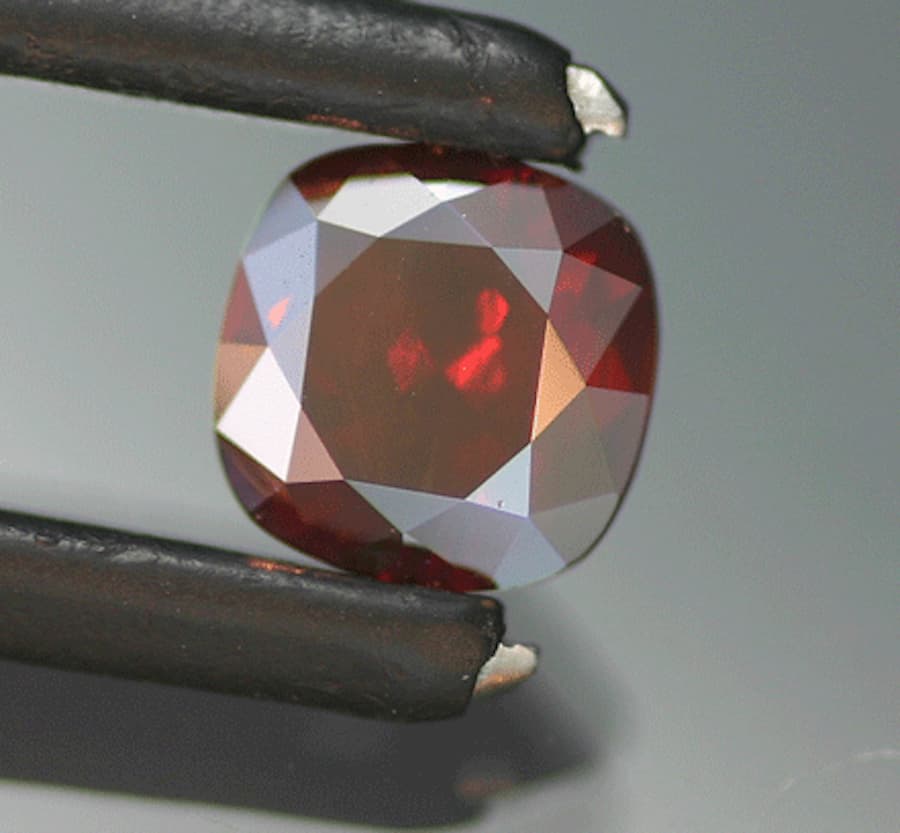Rutile Value, Price, and Jewelry Information
Though perhaps best known as inclusions within other gems, rutile crystals themselves can be faceted or cabbed as curiosities for collectors. Synthetics can show a variety of colors and have even been used as diamond simulants.
3 Minute Read
Though perhaps best known as inclusions within other gems, rutile crystals themselves can be faceted or cabbed as curiosities for collectors. Rutile can show a deep, red color. Synthetics can show a variety of colors and have even been used as diamond simulants.
Start an IGS Membership today
for full access to our price guide (updated monthly).Rutile Value
Comments
Rutile is polymorphous with anatase and brookite. They share the same chemical formula, TiO2 (titanium dioxide), but have different crystal systems and other gemological properties. These gems are rarely cut, but of the three you're more likely to encounter faceted or cabbed rutiles. Rutile also lends its name to the rutile mineral group. The only other gem-quality member of this group that gets faceted (rarely) is cassiterite.
As needle inclusions, rutile crystals occur in a wide variety of gem materials, such as quartz and agate (sagenite). Rutilated quartz pieces can make stunning jewelry stones as well as display specimens.
In corundum, rutile crystals occur as fibers, causing asterism in stones such as star sapphires. Rutile inclusions also cause chatoyancy in gem materials such as chrysoberyl. Sometimes, rutiles themselves may show cat's eyes when cabbed.
Faceted rutiles may disappoint collectors because the finished gems are so dark. Rutile's deep, red color may be so intense it can't be seen easily in stones larger than 1 carat. Cabochons might show reddish reflections in cracks and along imperfections.
Identifying Characteristics
Rutile's most distinctive characteristic is its extremely high dispersion or "fire." At 0.28, it's six times greater than diamond's and more dispersive than any other facetable gem material except cinnabar, which can rarely be cut in a way that shows off this property.
Rutiles have a color range that overlaps with polymorphs as well as group mates. However, they have greater hardness and specific gravity (SG) values than anatases and brookites. On the other hand, cassiterites are harder and much more dense.
Swiss rutile seems a bit more transparent than material from other localities.
Rutile's SG varies somewhat in relation to its trace elements.
- Iron (Fe) bearing: 4.2 - 4.4.
- Niobium (Nb) and tantalum (Ta) bearing: 4.2 - 5.6.
Synthetics
As a mineral, rutile has many industrial applications. Scientists have synthesized it for research into many areas, including its photocatalytic properties, like those of anatase.
Synthetic rutiles have also found jewelry use, appearing on the gem market in 1948. Created through the Verneuil or flame fusion process, these transparent, nearly colorless gems with a yellow tinge took full advantage of rutile's high dispersion.
For a time, gem dealers sold synthetic rutiles under the name Titania as diamond simulants. However, these stones showed too much fire to be believable simulants. Thus, they faded from use as other diamond simulants emerged, such as cubic zirconia. (Synthetic rutiles are also denser than diamonds).
Synthetic rutiles can also show colors such as yellow, brown, red, and blue.
Treatments
Heat treatments can turn light yellowish synthetic rutiles blue.
Sources
Sierra Leone produces nearly a third of the world's supply of rutiles.
Graves Mountain, Georgia produces fine rutile crystals in quartz veins. These pieces can weigh up to several pounds.
Other notable gem-quality sources include the following:
- Magnet Cove, Arkansas: huge, rough crystals.
- California; North Carolina; South Dakota; Virginia.
- Brazil: large, fine crystals.
- France; Myanmar; Pakistan; Russia; Sri Lanka; Switzerland.
The red sheen on this highly reflective rutile crystal is most apparent when brightly lit. Graves Mountain, Lincoln County, Georgia, USA. © Rob Lavinsky, www.iRocks.com. Used with permission.
Stone Sizes
Large crystals often have transparent areas that can provide stones for faceting. However, cut rutiles above 2-3 carats are so dark they appear opaque. Thus, this becomes the effective size limit of faceted gems.
- Devonian Group (Calgary, Alberta, Canada): 3.70.
Care
You're more likely to find natural rutiles in mineral collections than in jewelry collections. If you do have a synthetic gem as a diamond simulant, keep in mind that while it may exceed diamond in dispersion, it's far less hard (6-6.5 versus diamond's 10). Store it separately from other common jewelry stones such as quartz and topaz to avoid contact scratches. For cleaning, use a soft brush, mild detergent, and warm water. Consult our gemstone jewelry cleaning guide for more recommendations.
Joel E. Arem, Ph.D., FGA
Dr. Joel E. Arem has more than 60 years of experience in the world of gems and minerals. After obtaining his Ph.D. in Mineralogy from Harvard University, he has published numerous books that are still among the most widely used references and guidebooks on crystals, gems and minerals in the world.
Co-founder and President of numerous organizations, Dr. Arem has enjoyed a lifelong career in mineralogy and gemology. He has been a Smithsonian scientist and Curator, a consultant to many well-known companies and institutions, and a prolific author and speaker. Although his main activities have been as a gem cutter and dealer, his focus has always been education.
International Gem Society
Related Articles
Understanding Gem Synthetics, Treatments, And Imitations, Part 4: Synthetic Gemstone Guide
Star Gemstones: Tips For Beginners
How To Orient Sapphires With Silk Inclusions
Top Spots for Gem Hunting in the US
Never Stop Learning
When you join the IGS community, you get trusted diamond & gemstone information when you need it.
Get Gemology Insights
Get started with the International Gem Society’s free guide to gemstone identification. Join our weekly newsletter & get a free copy of the Gem ID Checklist!
